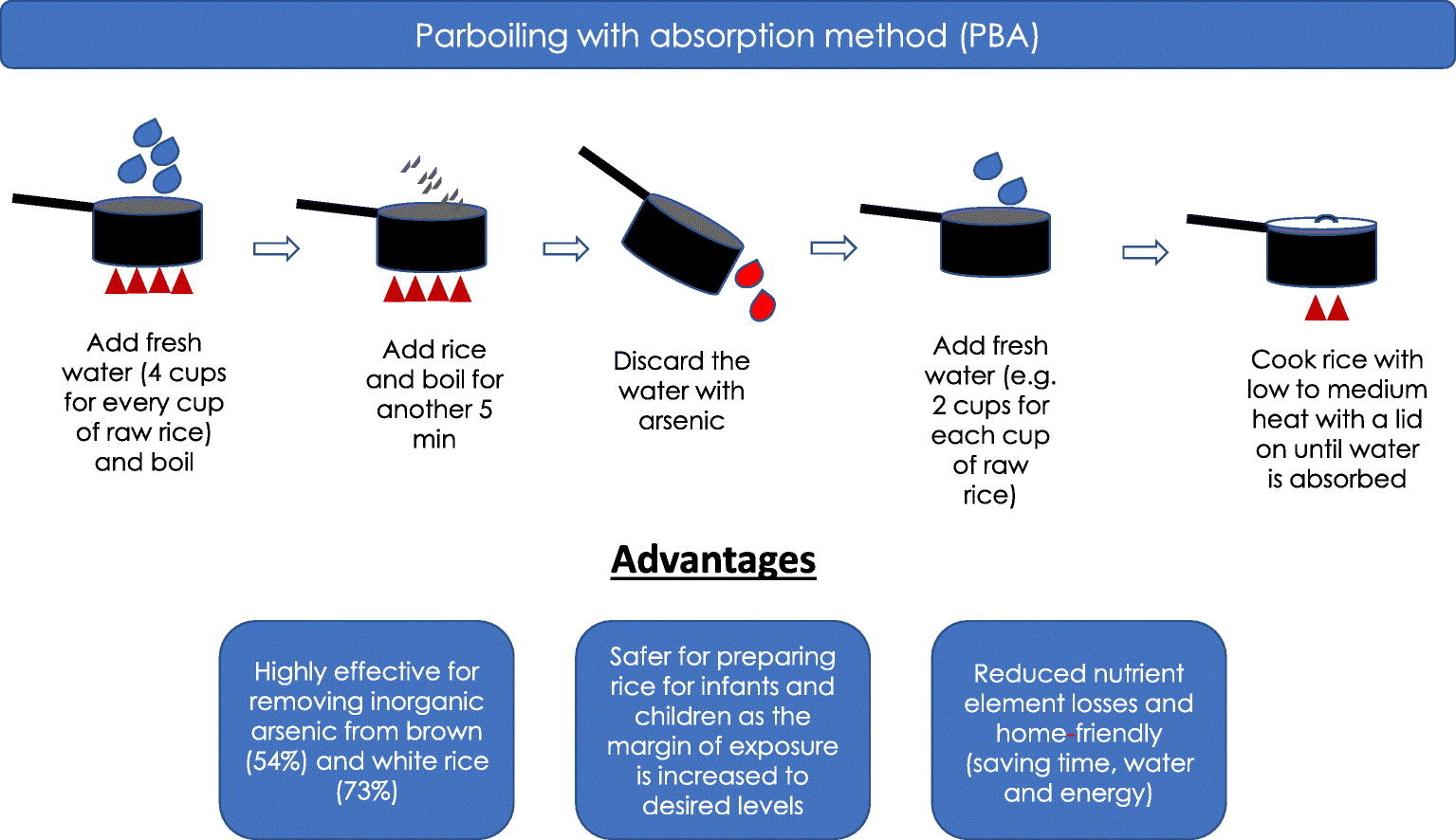Why you should know:
Arsenic is a carcinogen and has various other negative health effects; enough to warrant exposure limits in various jurisdictions. A five minute boil-and-discard step before cooking is a simple way to reduce your exposure, especially if you eat a lot of rice.
Details are in the study, linked in the title of this post. Here’s a diagram from the abstract:



Wow, lot to unpack here.
“Ain’t nobody got time for that.”
How much arsenic are we talking about here?
“Saving time, water, and energy” is apparently short for boil water, stand around, drain, re-boil more water using more energy, and finish cooking rice. Where is all this time saving happening?
“The margin of exposure [to arsenic] is increased to desired levels”. Hmmm I guess if you really think about it that is a true statement, but one heck of a roundabout way to say it.
The article explains the infographic and adds a lot more context.
The amount of arsenic depends on location - if you’re in a region that has standards on arsenic levels, like the EU, UK, or the US, then you’re probably fine, but the levels may be higher than what’s considered safe for children. This method would allow you to reduce the levels by around 50%, and since the levels for children are a bit under half of what’s acceptable for adults, that’s likely to make it safe for them.
The time savings are relative to other methods for reducing arsenic content, like cooking it with excess water (like a 12:1 ratio) and then discarding the excess, as this method allows you to use a rice cooker for the remaining time and to cook with a much smaller water:rice ratio, even accounting for the discarded water.
Yeah, took me a while to get through that paper. Pretty detailed, but a little red flag kept waving when all the results are percentages. I finally got down to the meat of the science and was pretty confused on actual levels. I still don’t have a good grasp of exactly how much iAs they measured, as the findings are adjusted for relative exposure by body weight. I suppose that’s the point of the paper, but would have been nice to have some relatable baseline to put things in perspective.
There is also a pretty large margin of error as a exposure 2.75x greater than used to calculate the results was within the same exposure limits linked to the 0.1% risk. That’s easy to add to their charts. Would have been nice.
Haha guess so. Misleading graphic taken out of context. That makes more sense. I never tried the excessive water method. It sounded interesting, but I refer to my point #1 above.
You were being generous going past (1.) I rather just die or stop reading rice